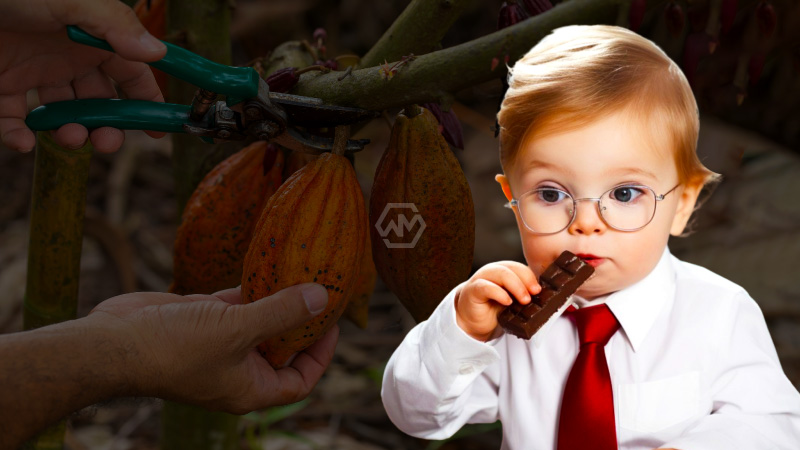- There is a desire to save chocolate.
- Ranchers can battle the mealybugs by inoculating their cacao trees against the infection.
- Notwithstanding, this arrangement accompanies its arrangement of difficulties.
- The immunizations are costly, particularly for low-wage ranchers, and inoculated trees produce a more modest collection of cacao.
- It’s an unpleasant reality for ranchers previously battling with the staggering impacts of the infection.
Chocolate, the cherished treat that gives pleasure to millions, is confronting a world-evolving danger. A quickly spreading infection is going after the cacao trees that give the fundamental fixing to our #1 extravagance, seriously endangering the worldwide chocolate inventory. Be that as it may, a group of scientists is retaliating, outfitted with an impossible weapon to save chocolate.
The cacao enlarged shoot infection sickness (CSSVD) is a staggering microorganism that can gather misfortunes of 15-50 percent in impacted cacao trees. The infection is spread by little bugs called mealybugs, which feed on the leaves, buds, and blossoms of the trees. The effect is especially extreme in West Africa, where about a portion of the world‘s chocolate starts. In Ghana alone, more than 254 million cacao trees have been lost as of late because of this infection.
Tree Virus is Threatening the Cacao Trees
“This infection is a genuine danger to the worldwide stock of chocolate,” cautions Benito Chen-Charpentier, teacher of science at The College of Texas at Arlington and co-creator of the new review distributed in the diary PLoS ONE.
Envision a world without chocolate. Not any more encouraging hot chocolate on a cool day, no more wonderful chocolate bars as a late morning treat, and no more wanton pastries to celebrate exceptional events. This is the potential future we face assuming CSSVD keeps on spreading uncontrolled.
This is where Chen-Charpentier and his partners from the College of Kansas, Grassland View A&M, the College of South Florida, and the Cocoa Exploration Establishment of Ghana come in. They’ve fostered another system that utilizes numerical information to streamline the immunization interaction, assisting ranchers with safeguarding their yields while limiting expenses and collecting misfortunes. The critical lies in understanding how mealybugs spread the infection.
The exploration group explored different avenues regarding different numerical designing procedures, creating two sorts of models that permit ranchers to make a defensive layer of immunized cacao trees around their unvaccinated trees. These models consider factors like the deferral between when a tree is tainted and when it begins showing side effects, as well as the inborn haphazardness in how sicknesses spread in reality.
By contrasting their model expectations with true information from cacao ranches in Ghana, the specialists had the option to tweak their models and show their adequacy.



